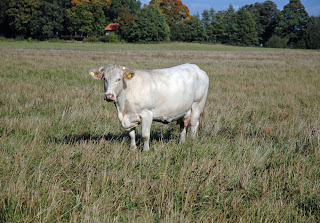Träd speglar sig i Skeboån i november 2004. Uppland Sweden.
Tuesday, September 25, 2007
Koskit & hästskit vid Tullgarnsnäs
Two days ago I put out some pictures from a sunday visit at Tullgarnsnäs. Walking on the fields there you can stumble on cowshit and horseshit. That made me think of an old favoruite phrase.
I am longing for a world where dung is dung and horseshit is horseshit.

I am longing for a world where dung is dung and horseshit is horseshit.
I have always thought I red it in a book of Henry Miller - The Colossus on Maroussi in 1969. So I took the paperbackedition from the shelf and browsed the now brownish pages for a marking of that phrase. I have not found it. Hopefully someone can help me find the right source.

Sunday, September 23, 2007
Tullgarnsnäs i september
Saturday, September 22, 2007
Sunday, September 16, 2007
Olika björkar
Saturday, September 15, 2007
Thursday, September 13, 2007
Sunday, September 9, 2007
Saturday, September 8, 2007
Gummiträdsfrön
Seeds from rubertrees picked on a walk on Marajó in Pará, Brazil in january 2007 and placed on a summertable in Tullinge.
When the seeds are ejected from the capsels you hear a sound like a pistolshot. Henry Wickham took 70 000 of them to Kew garden in London in 1876. They grow and where exported to south-east Asia and led to the fall of Barzilian rubber-industry in the 1930th.
Read more about it in Steven Alexanders book Santarém Riverboat Town. You can read more about his book in his blog http://bosque-santa.blogspot.com/ .

When the seeds are ejected from the capsels you hear a sound like a pistolshot. Henry Wickham took 70 000 of them to Kew garden in London in 1876. They grow and where exported to south-east Asia and led to the fall of Barzilian rubber-industry in the 1930th.
Read more about it in Steven Alexanders book Santarém Riverboat Town. You can read more about his book in his blog http://bosque-santa.blogspot.com/ .

Monday, September 3, 2007
Persikoskörd på Pinnvägen
Nästan hela skörden i år 2007. Förvånansvärt många blir förvånade över att det går att odla utanför växthus. men som syns går det alldels utmärkt mot en södervägg. Det är bara att sätta igång!
Almost the whole harvest of peaches this year. Many get surprised of the fact that the peaches can grow in the free at our latitude, but I can tell that it is completely free from problems.

Almost the whole harvest of peaches this year. Many get surprised of the fact that the peaches can grow in the free at our latitude, but I can tell that it is completely free from problems.

Saturday, September 1, 2007
Cachewnötsträd vid Alter do Cháo, Pará, Brazil
- Stoppa bussen, sa vår guide, Håkan. Och så fick vi en förevisning av och en massa ny kunskap om kashevnötter! Och så blev det några bilder i januari 2007.
Här några rader ur Wikipedia.
The Cashew (Anacardium occidentale; Anacardium curatellifolium) is a tree in the flowering plant family Anicardiaceae. The plant is native to northeastern Brazil, where it is called by its Portugese name Caju (the fruit) or Cajueiro (the tree). It is now widely grown in tropical climates for its cashew "nuts" and cashew apples.
What appears to be the fruit of the cashew tree is an oval or pear-shaped accesory fruit or false fruit that develops from the receptacle of the cashew flower. Called the cashew apple, better known in Central America as "marañón", it ripens into a yellow and/or red structure about 5–11 cm long.


Här några rader ur Wikipedia.
The Cashew (Anacardium occidentale; Anacardium curatellifolium) is a tree in the flowering plant family Anicardiaceae. The plant is native to northeastern Brazil, where it is called by its Portugese name Caju (the fruit) or Cajueiro (the tree). It is now widely grown in tropical climates for its cashew "nuts" and cashew apples.
What appears to be the fruit of the cashew tree is an oval or pear-shaped accesory fruit or false fruit that develops from the receptacle of the cashew flower. Called the cashew apple, better known in Central America as "marañón", it ripens into a yellow and/or red structure about 5–11 cm long.


Subscribe to:
Comments (Atom)












































